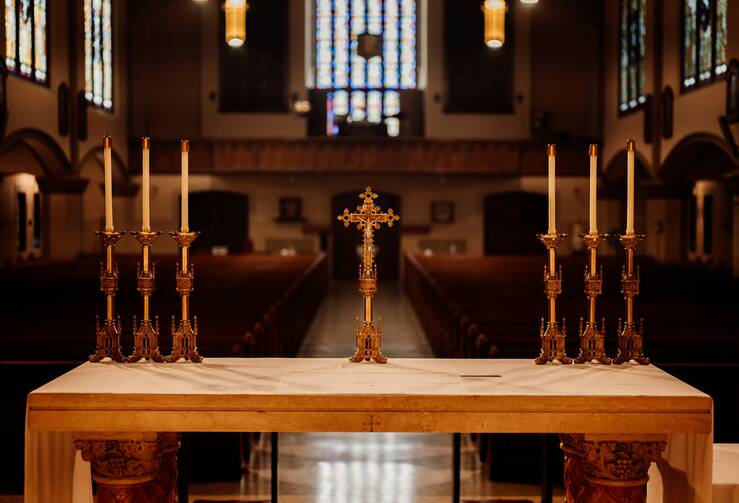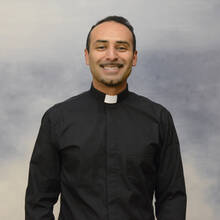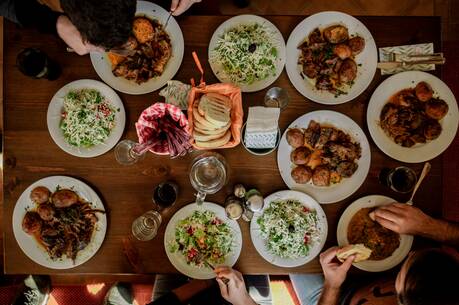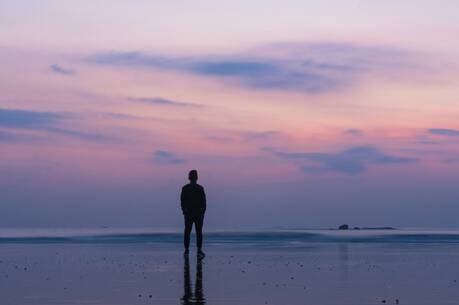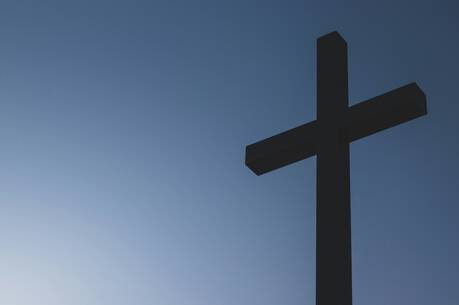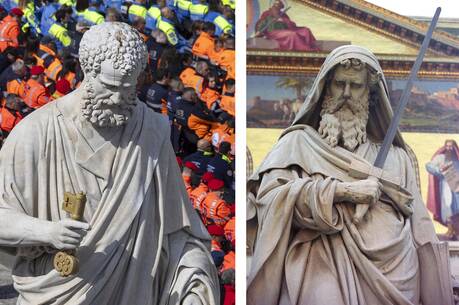An Image of Church: The People, God and the Lamb
Congratulations to newly elected Pope Leo XIV, Bishop of Rome and Pastor of the Universal Church. This Sunday’s readings offer practical, mystical and spiritual resources that the new pope will have to rely on and remember during his ongoing governance of a community of faith that has stood the test of time. This Sunday’s readings provide illustrations of the ways that the church has reflected about its own nature from the first centuries.
“The city had no need of sun or moon to shine on it, for the glory of God gave it light, and its lamp was the Lamb” (Rv 21:23).
Where is “authority” located in the structure of your faith community?
How important is it to your experience of faith for you to help build up the church?
How are God and the Lamb present at the center of your faith?
The church expresses an unseen unity among a vast body of faithful who differ in distance and culture. This unified body is rightly called the universal church, while each diocese is a local church in its own right. In this Sunday’s first reading, what becomes noticeable is the discernment needed to maintain this unity within diversity. “Because there arose no little dissension and debate,” Acts recounts, “it was decided that Paul, Barnabas, and some of the others should go up to Jerusalem to the apostles and elders about this question” (Acts 15:2). The matter is of significance since some among the group are spreading word that those not adhering strictly to Mosaic practice cannot be saved (Acts 15:1).
Paul and Barnabas, along with apostles and elders “in agreement with the whole church” decide to settle this misunderstanding (Acts 15:22). The collective body of apostles and elders wrote a letter in their own name and in the name of Christ saying, “It is the decision of the Holy Spirit and of us not to place on you any burden beyond these necessities” (Acts 15:28). Notice the two centers of authority, the Holy Spirit and the gathering of apostles and elders, who together form the decision-making body of the Christian community. The center of this body will move over time from Jerusalem to other centers of influence including Antioch, cities of Asia Minor and eventually Rome.
Notice, however, where this Sunday’s second reading described the center of God’s activity among the faithful. Biblically speaking, it ought to be Mount Zion and the holy city of Jerusalem. But in Revelation’s vision, these are missing. There is no temple, church or physical structure of any kind in sight within this city. What is happening? The closing chapters of Revelation describe the “city of God” with its architectural structure composed of peoples rather than brick and mortar. The twelve tribes of Israel make up the “walls” and its “foundation” formed by the twelve apostles, described as precious stones and colored gems (Rv 21:12-14). Then to the visionary’s surprise, in place of the sacred temple is the living God: “I saw no temple in the city, for its temple is the Lord God almighty and the Lamb” (Rv 21:22). Both God and the Lamb take the center place in this closing vision of the Book of Revelation. There is no need for light from the sun or moon in this new city, “for the glory of God gave it light” (Rv 21:23).
Revelation “reveals” a final otherworldly description made up of people, the flesh and blood members, the living saints and the martyrs of the past. The community of faith is not only a structure, but also a people on pilgrimage. Pope Leo XIV expressed a vision of the universal church similar to this in some of his first statements. This was especially clear when the world heard his opening address as the newly appointed Bishop of Rome, “Peace be with all of you.” In this he echoes the message of Jesus from this Sunday’s Gospel. As he prepared to undertake his passion, he gave his friends one final gift, “Peace I leave with you; my peace I give to you. Not as the world gives do I give it to you” (Jn 14:27).


